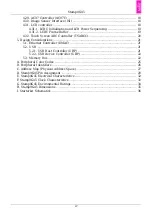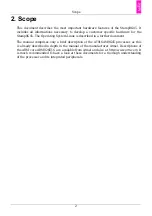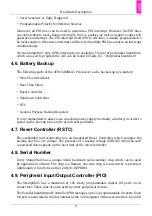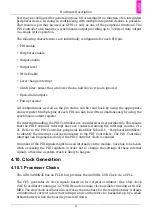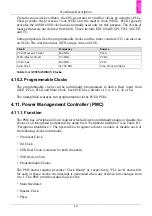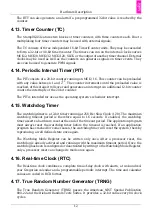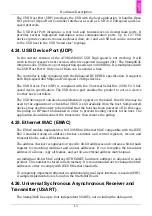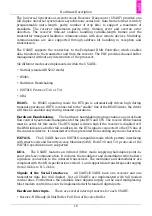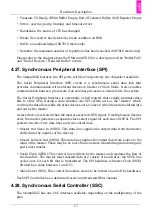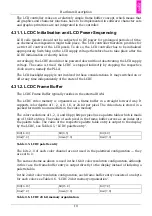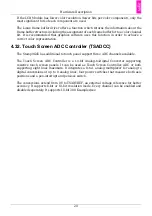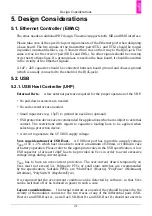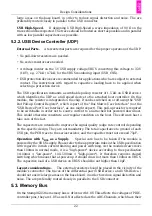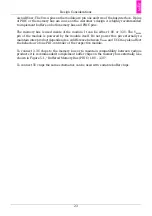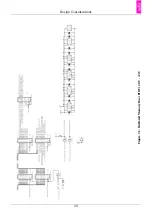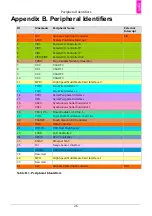
Hardware Description
12
The RTT can also generate an alarm if a preprogrammed 32-bit value is reached by the
counter.
4.13. Timer Counter (TC)
The Stamp9G45 features two blocks of timer counters with three counters each. Due to
multiplexing four timer counters may be used with external signals.
The TC consists of three independent 16-bit Timer/Counter units. They may be cascaded
to form a 32-bit or 48-bit timer/counter. The timers can run on the internal clock sources
MCK/2, MCK/8, MCK/32, MCK/128, SLCK or the output of another timer channel. External
clocks may be used as well as the counters can generate signals on timer events. They
also can be used to generate PWM signals.
4.14. Periodic Interval Timer (PIT)
The PIT consists of a 20-bit counter running on MCK / 16. This counter can be preloaded
with any value between 1 and 2
20
. The counter increments until the preloaded value is
reached. At this stage it rolls over and generates an interrupt. An additional 12-bit counter
counts the interrupts of the 20 bit counter.
The PIT is intended for use as the operating system’s scheduler interrupt.
4.15. Watchdog Timer
The watchdog timer is a 12-bit timer running at 256 Hz (Slow Clock / 128). The maximum
watchdog timeout period is therefore equal to 16 seconds. If enabled, the watchdog
timer asserts a hardware reset at the end of the timeout period. The application program
must always reset the watchdog timer before the timeout is reached. If an application
program has crashed for some reason, the watchdog timer will reset the system, thereby
reproducing a well defined state once again.
The Watchdog Mode Register can be written only once. After a processor reset, the
watchdog is already activated and running with the maximum timeout period. Once the
watchdog has been reconfigured or deactivated by writing to the Watchdog Mode Register,
only a processor reset can change its mode once again.
4.16. Real-time Clock (RTC)
The Real-time clock combines a complete time-of-day clock with alarm, a two-hundred-
year Gregorian calendar and a programmable periodic interrupt. The time and calendar
values are coded in BCD format.
4.17. True Random Number Generator (TRNG)
The True Random Generator (TRNG) passes the American NIST Special Publication
800-22 and the Diehard Random Tests Suites. It provides a 32-bit value every 84 clock
cycles.

